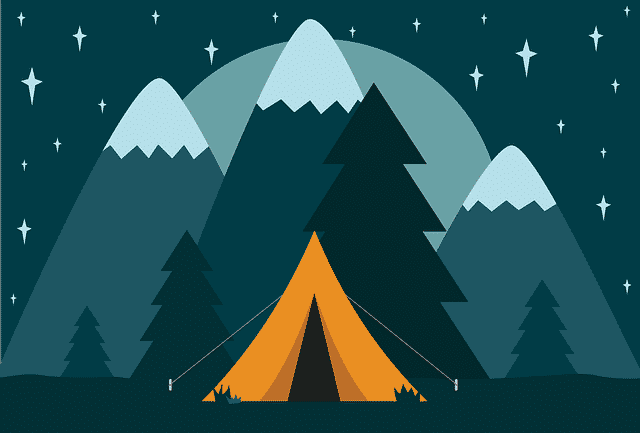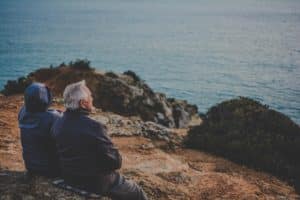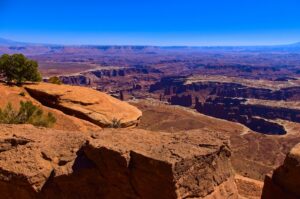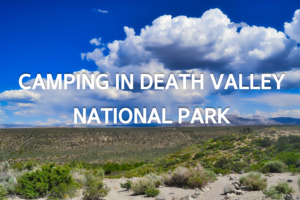What are the best national parks for winter camping? Your definition of winter camping may vary, but for our purposes, we’ve picked out five parks that shouldn’t be crowded in the winter and will have tolerable weather, but and will still allow you to rough it a bit.
Which are the best national parks for winter camping?
Here Are Our Five Best National Parks for Winter Camping
- Channel Islands National Park
- Death Valley National Park
- Everglades National Park
- Grand Canyon National Park
- Big Bend National Park
We’ve compiled a list of five of the best national parks where you can camp in the park, avoid the crowds and still have good enough weather to enjoy the natural beauty. They’re all incredibly unique, from islands to deserts to wetlands, here are some of the best parks to camp in during the winter.
Channel Islands National Park
 Located off the coast of Southern California, Channel Islands National Park has a year-round climate that will allow you to camp there comfortably any time of year. High temperatures in December through February average about 62 degrees Fahrenheit. Winter is the rainy season, though, as January and February will be the best chance for rain.
Located off the coast of Southern California, Channel Islands National Park has a year-round climate that will allow you to camp there comfortably any time of year. High temperatures in December through February average about 62 degrees Fahrenheit. Winter is the rainy season, though, as January and February will be the best chance for rain.
You can camp year-round on all of the park’s five islands, with each one having an established campground. The campgrounds are primitive and located away from the boat landing areas. As a result, you’ll need to carry your gear to the area. Most also do not have a water supply or trash, so you’ll need to pack out your own. There is a $15 per night fee and reservations are required. The only exception is that backcountry beach camping is permitted on Santa Rosa Island. The fee there is $10 per night. You can visit recreation.gov to make reservations. To protect the islands’ fragile habitat, camping outside the established campgrounds is prohibited.
You’ll also need to take a boat or plane to the islands. Visit our Channel Islands Getting There page for more information. Transportation is available year-round. If you’re an experienced kayaker, you can cross the Santa Barbara Channel from the mainland on your own.
Death Valley National Park
 Located in the California desert, Death Valley National Park is best known for its low-lying, dry climate where temperatures can reach 116 Fahrenheit in the summer. Because of this, it can be a dangerous and uncomfortable place to camp. But in the winter, you’ll find comfortable day-time temperatures and a park with far less visitors.
Located in the California desert, Death Valley National Park is best known for its low-lying, dry climate where temperatures can reach 116 Fahrenheit in the summer. Because of this, it can be a dangerous and uncomfortable place to camp. But in the winter, you’ll find comfortable day-time temperatures and a park with far less visitors.
Daytime temperatures in December and January top out at between 65 and 67 degrees Fahrenheit on average. Nighttime temperatures usually hover around the 40 degree mark. The park receives little precipitation, so even in the winter you’re unlikely to see much. And not only will you have bearable temperatures that will allow you to explore more of the park, it is also the time of year when the park receives its fewest visitors.
The park has seven campgrounds open in the winter. The only one you’ll need reservations for is Furnace Creek, which will run $22 per night. You can visit recreation.gov to reserve your spot. Furnace Creek is the only campground with full amenities. For a complete list of what to expect and the cost at each campground, you can visit the parks’ website here.
Everglades National Park
 At the tip of South Florida is one of the country’s best-known national parks and a place that is great to visit and camp in during the winter. You’ll find moderate temperatures in the high 70’s or low 80’s and less precipitation. The oppressive humidity of the summer gives way to more pleasant and drier air in the winter. Not to mention the mosquitos and other insects are not as bad in the winter. Because of this, winter is actually the busiest time for visitors in the park.
At the tip of South Florida is one of the country’s best-known national parks and a place that is great to visit and camp in during the winter. You’ll find moderate temperatures in the high 70’s or low 80’s and less precipitation. The oppressive humidity of the summer gives way to more pleasant and drier air in the winter. Not to mention the mosquitos and other insects are not as bad in the winter. Because of this, winter is actually the busiest time for visitors in the park.
For front-country camping, there are two campgrounds, Flamingo and Long Pine Key, accessible by car or RV. Both are run by Flamingo Adventures and reservations are recommended. Click here to reserve your spot. Both have potable water, dump stations and trash removal. But for a full-service campground, you’ll have to go to Flamingo, where you’ll also find electrical hookups, firewood for sale and a camp store. Fees range from $30 to $55 per night for each campground.
Backcountry campsites are accessible by canoe, kayak, or motorboat. Some are also available by hiking. You’ll need to pay the park entrance fee plus $23 for a required permit. You can buy it at recreation.gov or at the park.
Grand Canyon National Park
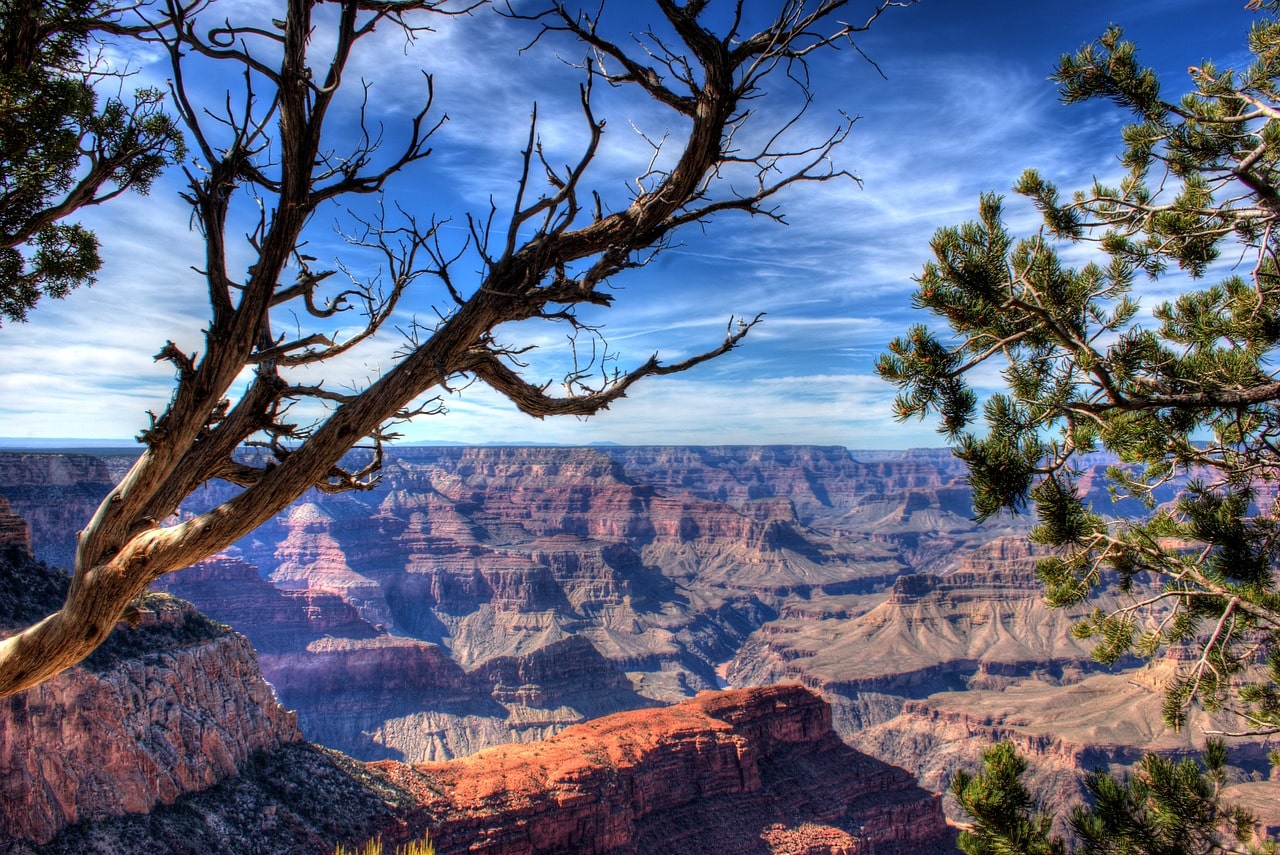 Grand Canyon National Park is the second-most visited national park in the United States for a reason. The world-famous canyon is one of the seven natural wonders of the world and in the summer you’re likely to encounter large crowds and long lines. Visiting in the winter is a different story. For starters, the lesser-visited North Rim of the park is closed to vehicle traffic from December 1 to May 15, so we’ll focus mainly on where you can camp near the South Rim.
Grand Canyon National Park is the second-most visited national park in the United States for a reason. The world-famous canyon is one of the seven natural wonders of the world and in the summer you’re likely to encounter large crowds and long lines. Visiting in the winter is a different story. For starters, the lesser-visited North Rim of the park is closed to vehicle traffic from December 1 to May 15, so we’ll focus mainly on where you can camp near the South Rim.
As far as weather is concerned, be prepared for cold and sometimes frigid temperatures in December and January. The average highs are only in the low 40’s and temperatures at night can typically drop below 20 degrees.
North Rim
As mentioned, the North Rim is closed to vehicle traffic in the winter, but that doesn’t mean you can’t camp there. If you’re prepared for the hike, make sure to get your backcountry permit ($10 per permit plus $12 per person or stock animal per night camped below the rim and $12 per group per night camped above the rim.) It will be a multi-day trip and you’ll have to take care of all your necessities and pack out any trash. During the summer, only about 10% of the park’s visitors are on the North Rim, so you’re likely to find a lot of solitude there during the winter.
South Rim
For the South Rim, the popular Mather Campground is open on a first-come, first-serve basis. Each spot has a fire ring, parking space, picnic table and room for three tents. The campground also has flushable toilets and drinking water. The fee for a standard site is $18 per night.
If you have an RV and need a full hookup, you’ll have to go to Trailer Village RV Park. You’ll find spots with sewer, water and electricity that can fit RVs up to 50 feet. It’s operated by an outside company and rates vary from $64 to $74 per night depending on the day of the week. You can make reservations here.
Big Bend National Park
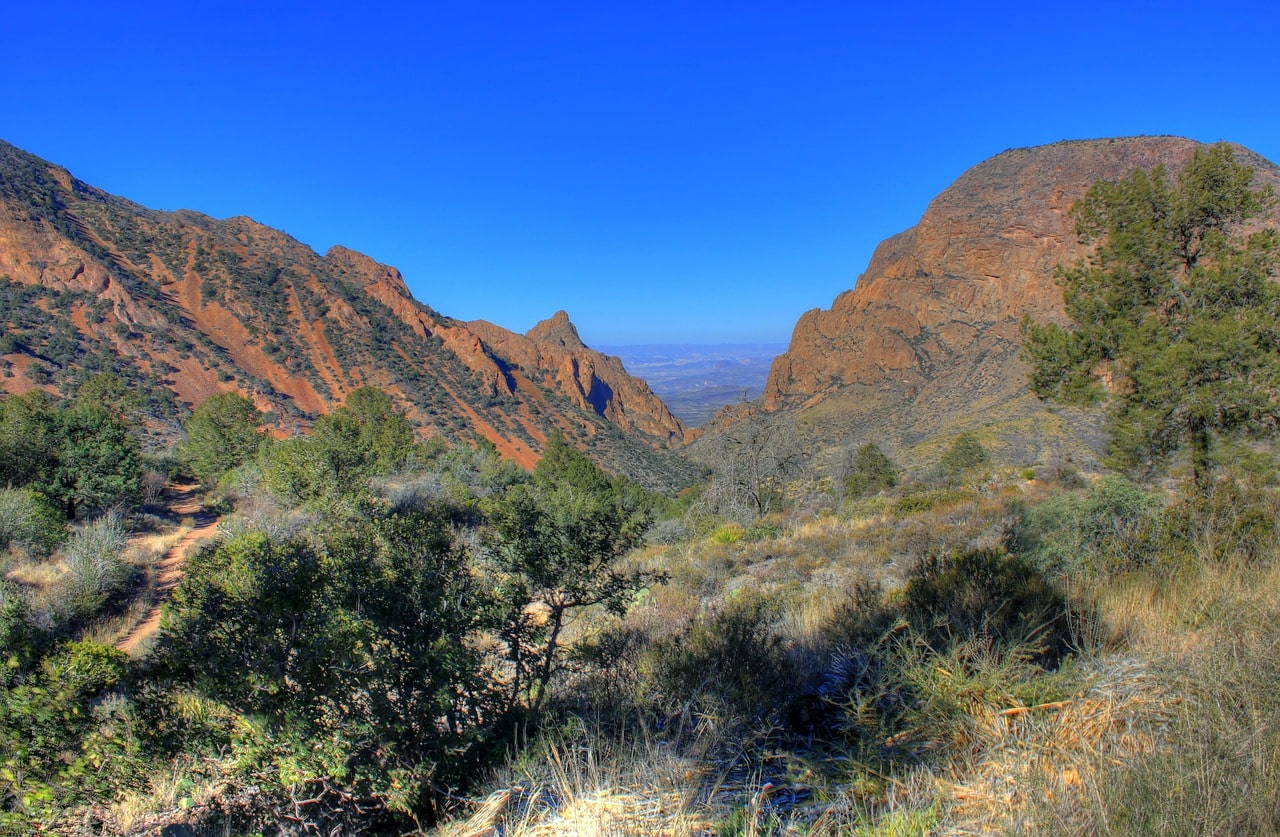 Big Bend National Park, located in Texas, provides a great mix of moderate temperatures and low precipitation that makes it ideal to visit in the winter. And with its size and lack of crowds, you’re sure to be able to find some solitude in one of the country’s less-known parks.
Big Bend National Park, located in Texas, provides a great mix of moderate temperatures and low precipitation that makes it ideal to visit in the winter. And with its size and lack of crowds, you’re sure to be able to find some solitude in one of the country’s less-known parks.
While temperatures are regularly in excess of 100 degrees in the summer, in the winter you’ll find average highs in the low to mid 60s. You’ll also have the benefit of less precipitation and clearer skies. And due to its remoteness and distance from cities, it has the least light pollution of any other national park in the lower 48 states according to the National Park Service. It’s one of the most ideal spots in the entire continental United States for stargazing.
The National Park Service operates three front-country campgrounds in the park where you’ll find drinking water and restroom facilities. Reservations are required and the cost is $16 per night. Two of them are located near the Rio Grande River, while the Chisos Basin Campground sits at 5,400 feet. From the basin you’ll get an amazing view of the sunset among the mountains.
For RV hook-ups, the Rio Grande Village RV Park is operated by an outside concessioner, Forever Resorts. The park has 25 full-service sites. The cost is $36 for double occupancy and an additional $3 per person.
For those who want to backcountry camp, there are options available in the park as well. A backcountry permits is required. The park has designated back-country sites and you’ll need to choose which one you’ll be staying at when you get the permit. You can reserve it online in advance or buy it at the park. The cost is $10 for an overnight permit.

